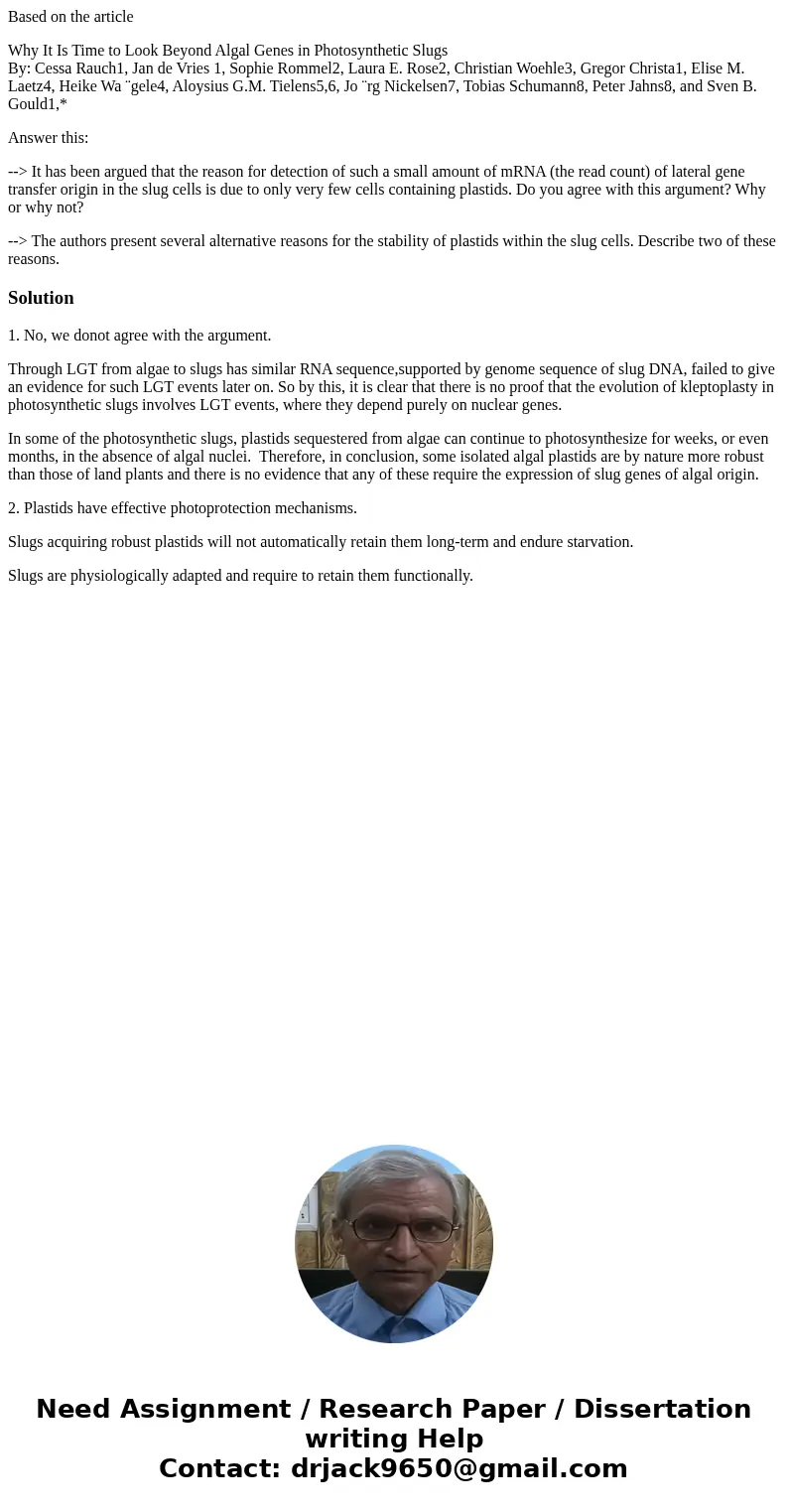Based on the article Why It Is Time to Look Beyond Algal Gen
Based on the article
Why It Is Time to Look Beyond Algal Genes in Photosynthetic Slugs
By: Cessa Rauch1, Jan de Vries 1, Sophie Rommel2, Laura E. Rose2, Christian Woehle3, Gregor Christa1, Elise M. Laetz4, Heike Wa ¨gele4, Aloysius G.M. Tielens5,6, Jo ¨rg Nickelsen7, Tobias Schumann8, Peter Jahns8, and Sven B. Gould1,*
Answer this:
--> It has been argued that the reason for detection of such a small amount of mRNA (the read count) of lateral gene transfer origin in the slug cells is due to only very few cells containing plastids. Do you agree with this argument? Why or why not?
--> The authors present several alternative reasons for the stability of plastids within the slug cells. Describe two of these reasons.
Solution
1. No, we donot agree with the argument.
Through LGT from algae to slugs has similar RNA sequence,supported by genome sequence of slug DNA, failed to give an evidence for such LGT events later on. So by this, it is clear that there is no proof that the evolution of kleptoplasty in photosynthetic slugs involves LGT events, where they depend purely on nuclear genes.
In some of the photosynthetic slugs, plastids sequestered from algae can continue to photosynthesize for weeks, or even months, in the absence of algal nuclei. Therefore, in conclusion, some isolated algal plastids are by nature more robust than those of land plants and there is no evidence that any of these require the expression of slug genes of algal origin.
2. Plastids have effective photoprotection mechanisms.
Slugs acquiring robust plastids will not automatically retain them long-term and endure starvation.
Slugs are physiologically adapted and require to retain them functionally.

 Homework Sourse
Homework Sourse